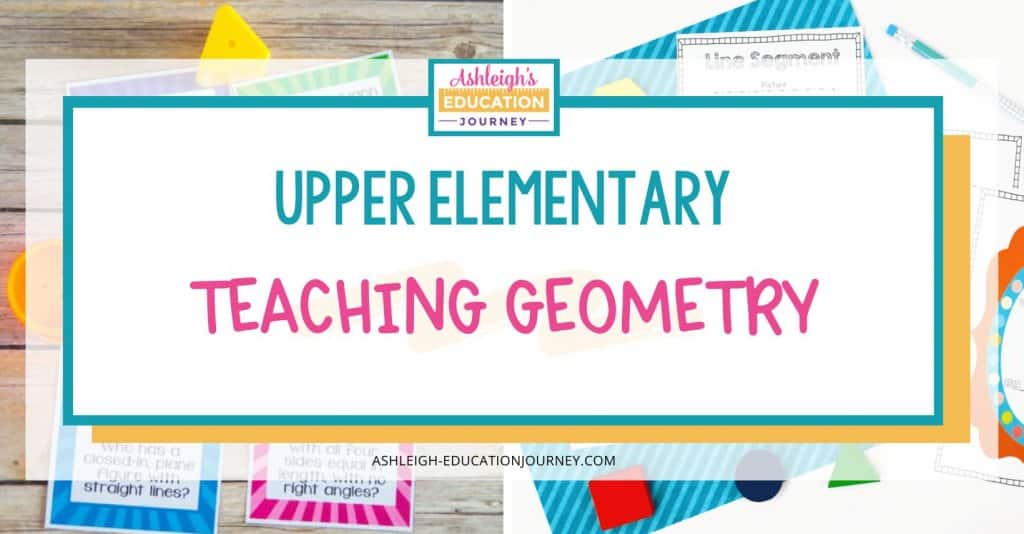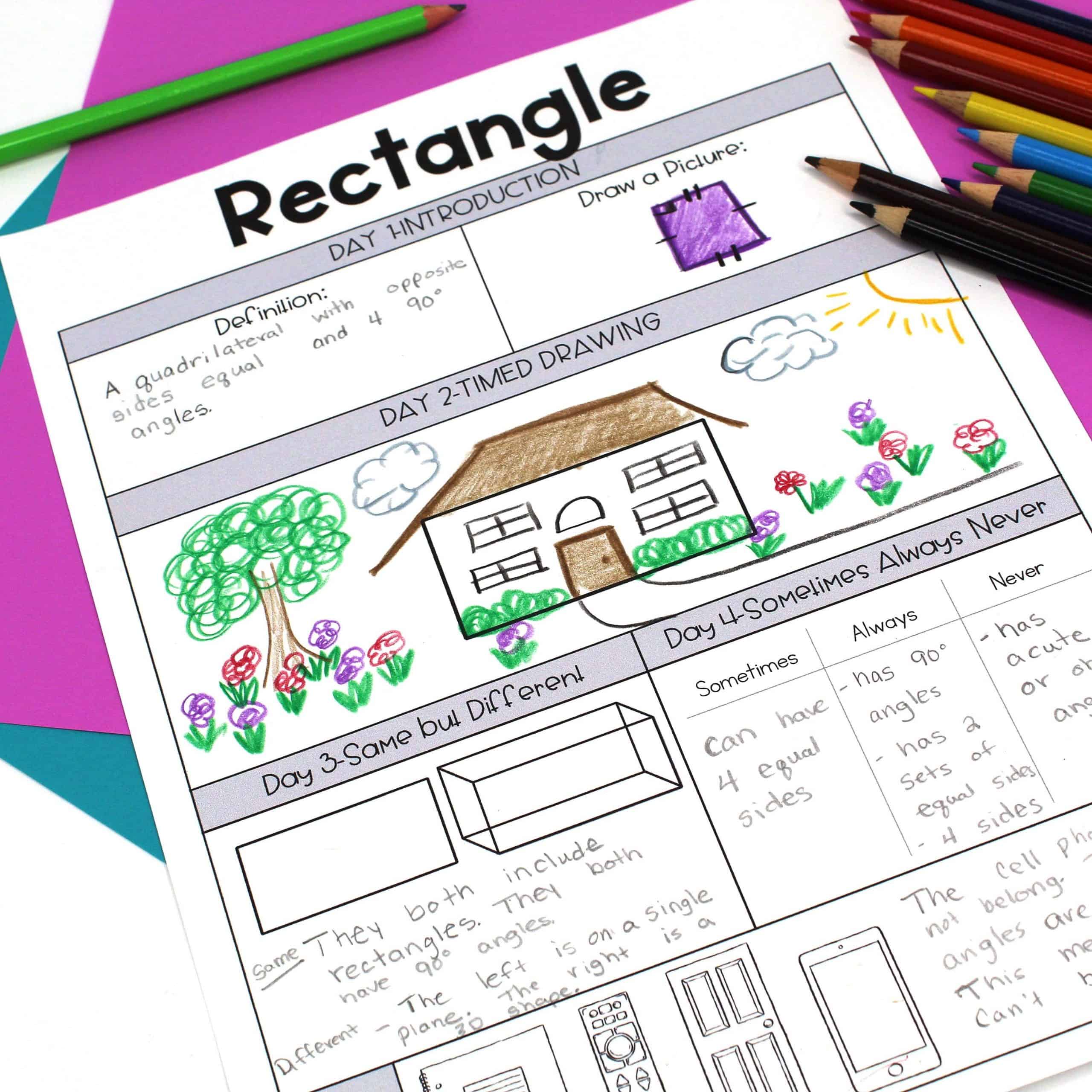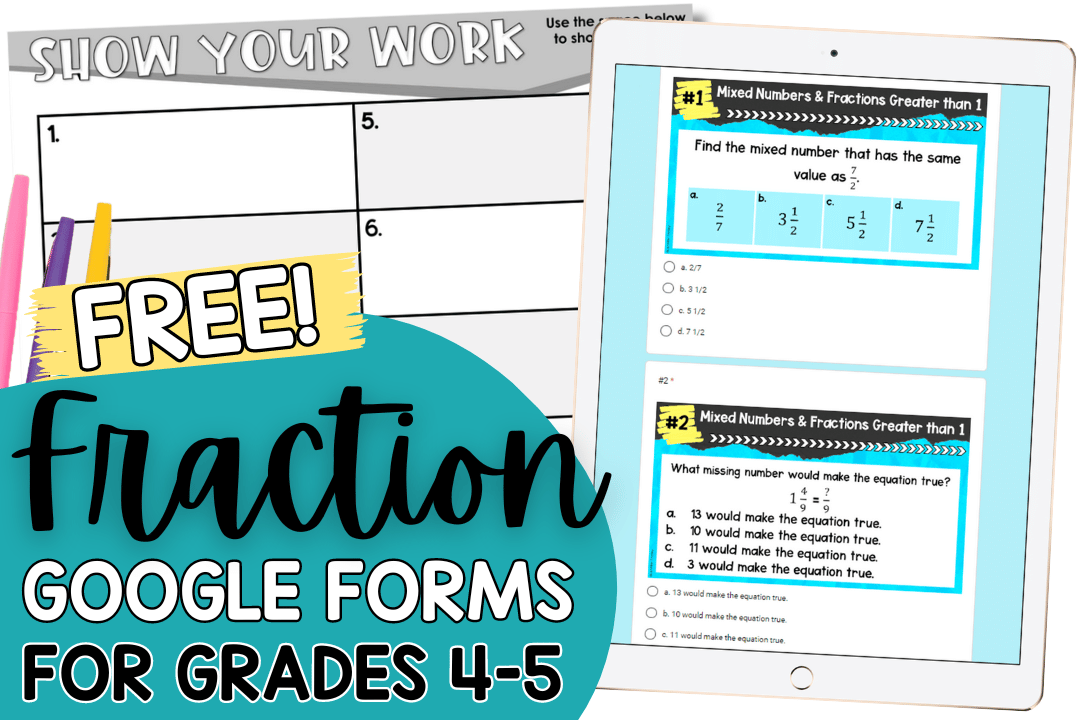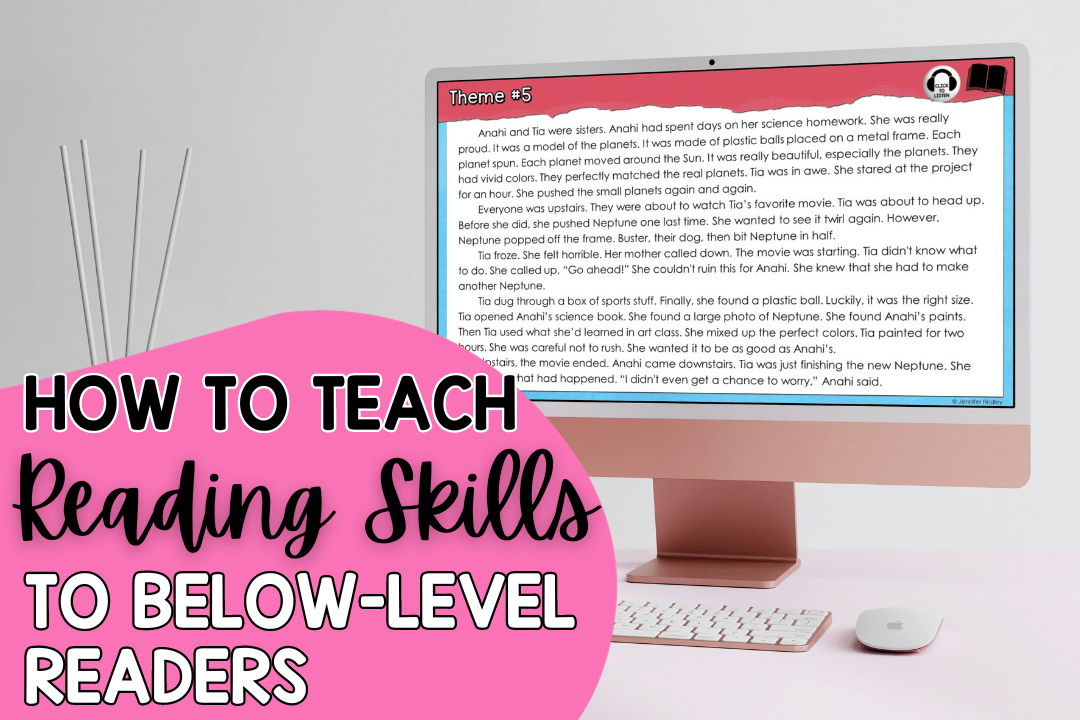When teaching upper elementary math, it’s important that geometry worksheets and activities are more than memorizing geometric terms. Of course, these geometry terms are important, but our instruction shouldn’t stop there. Students need time to explore and engage with multiple geometry concepts to develop a strong foundational understanding of geometry.
Geometry Vocabulary
I’ve found that it is a tremendous help to preteach geometry vocabulary before beginning my geometry unit. You can use this resource to teach geometry vocabulary slowly, throughout the year. This will allow your geometry unit to focus on problem solving and application, rather than isolated memorization.
Introduce one word a week, so that by the time you reach your geometry unit, students already have a fairly solid understanding of geometry vocabulary. Each day students complete a brief, but engaging, task.
- Monday-write the definition and draw an example.
- Tuesday-timed drawing-Give students two or three minutes to finish the drawing in that section. Students MUST incorporate the included graphic in their picture.
- Wednesday-same but different-Students explain how to images are alike and how they are different.
- Thursday-Always/Sometimes/Never-Students should write a sometimes statement, always statement, and never statement using the vocabulary word.
- Friday-This day varies between a true or false question, would you rather question, or a which one doesn’t belong question.
Since students are familiar with most geometry terms prior to beginning, I don’t spend a lot of instructional time with direct vocabulary instruction. However, I did add a geometry vocabulary booklet to my 4th Grade Geometry Unit.
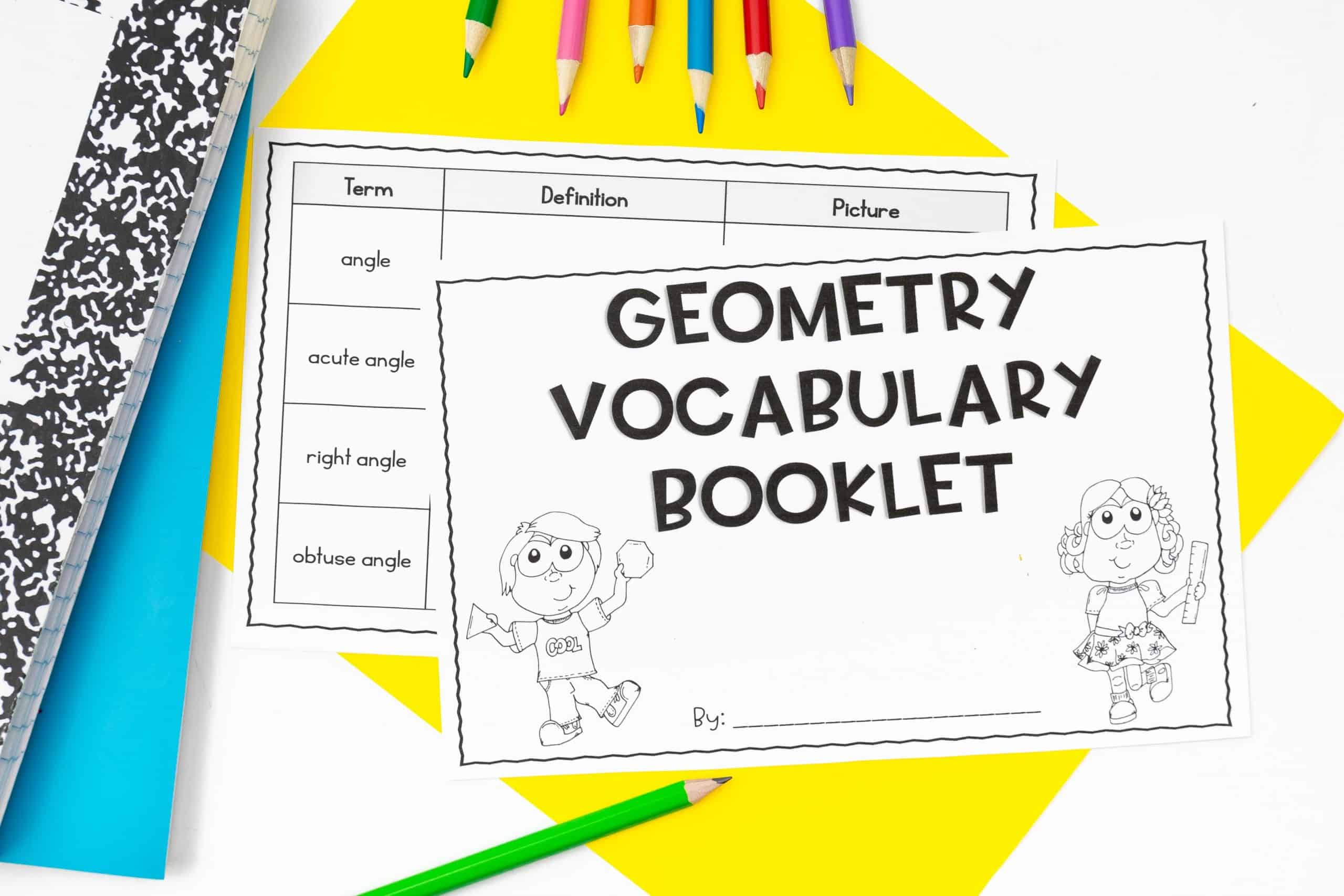
For vocabulary review, you can weave in a few vocabulary games to help students remember the many terms. Some of my favorites are Geometry: I Have Who Has and Quizlet Live. If you aren’t familiar with Quizlet, I highly recommend it. You can find a blog post on how I use it here.
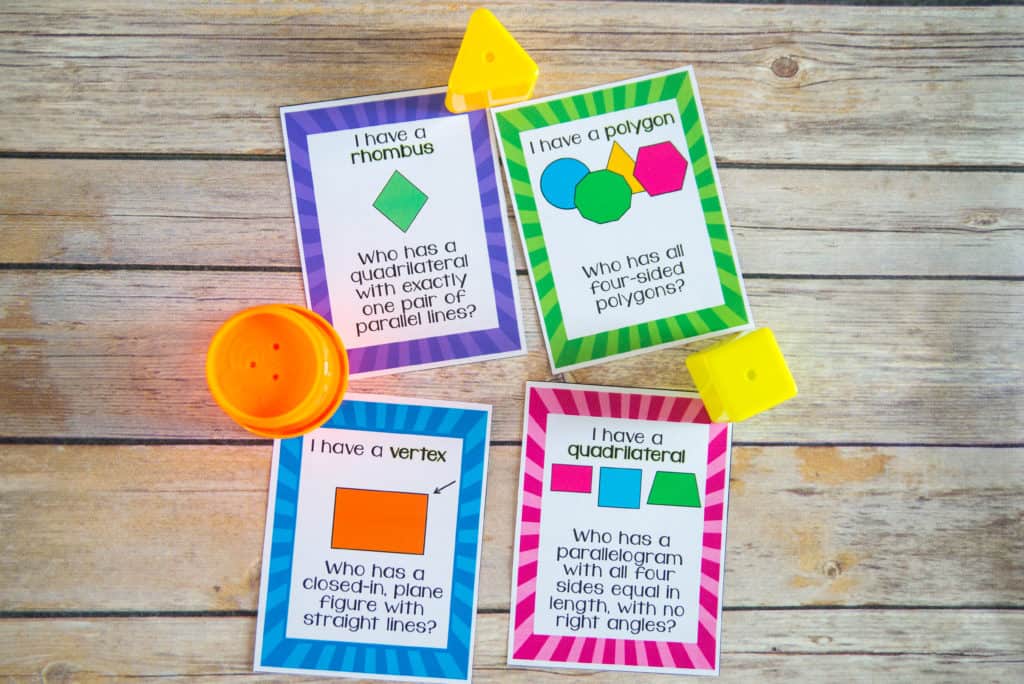
Geometry Worksheets & Activities
Once students have familiarity with geometry terms, you can focus on application and problem solving. I start by teaching symmetry and have students use either pattern blocks to create symmetrical figures. After giving students hands-on opportunities, I have students create a Symmetry Monster using dotted paper.
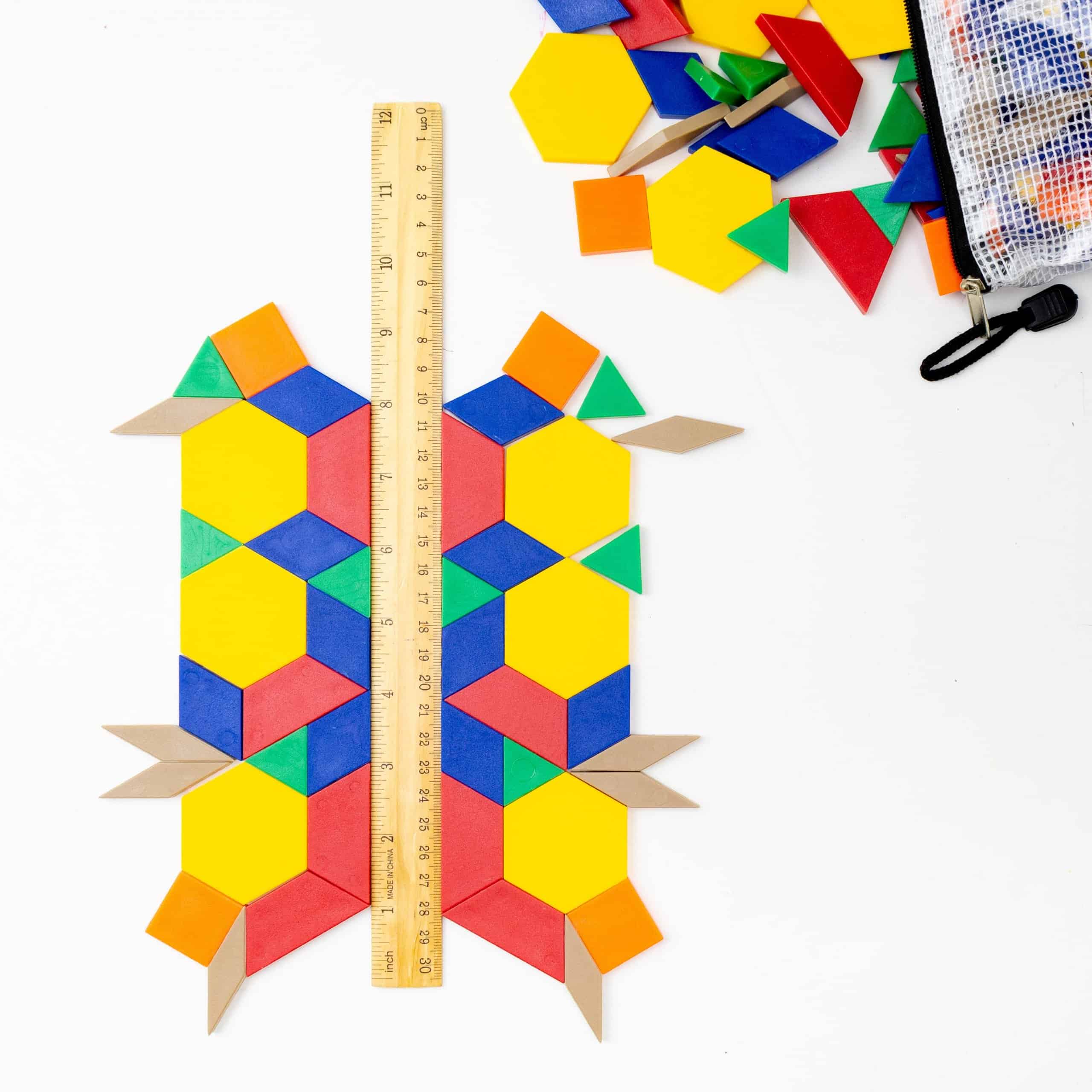
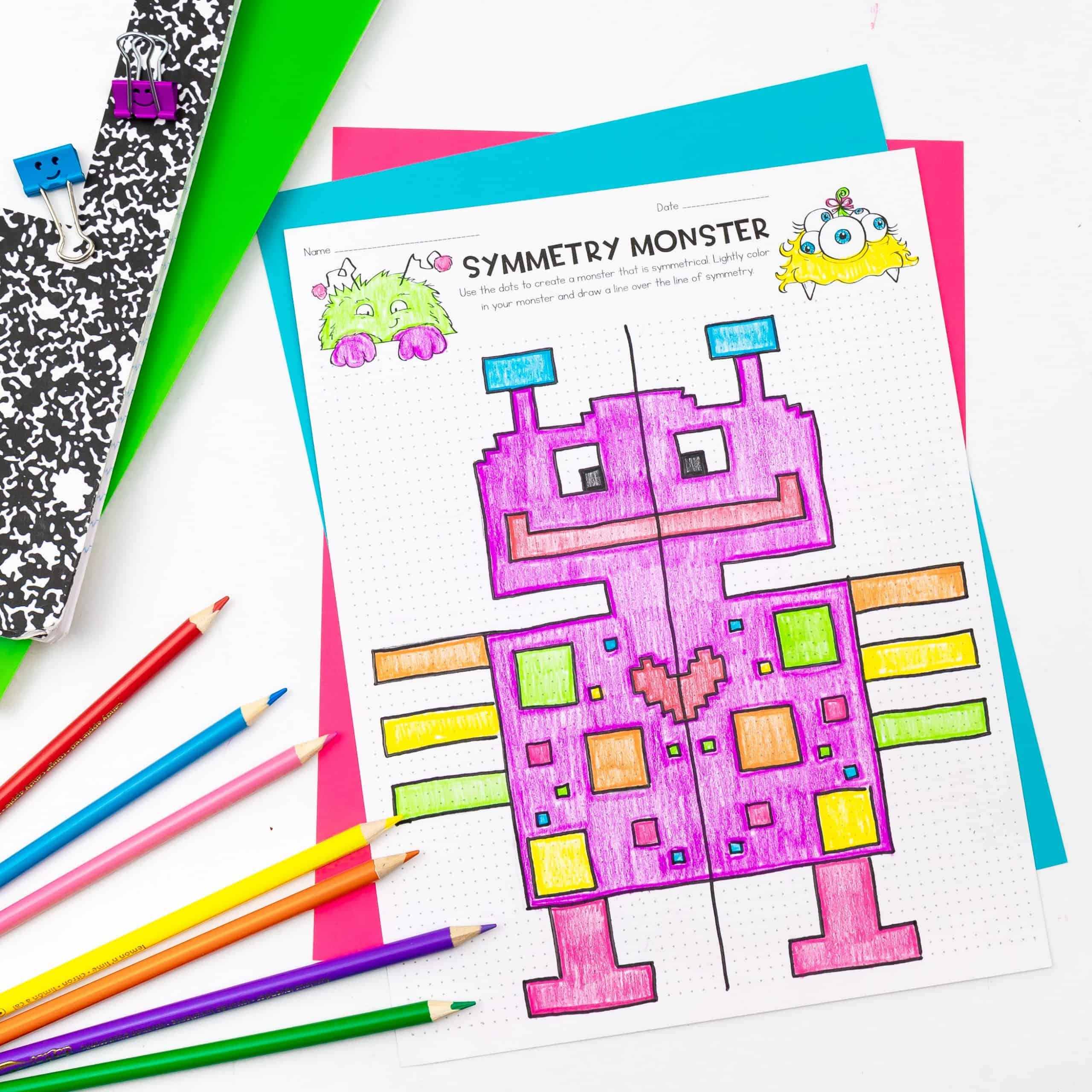
A great follow-up geometry worksheet is this alphabet symmetry sort. Students sort letters into groups of no lines of symmetry, 1 line of symmetry, or 3 lines of symmetry. Not all fonts work well for this activity.
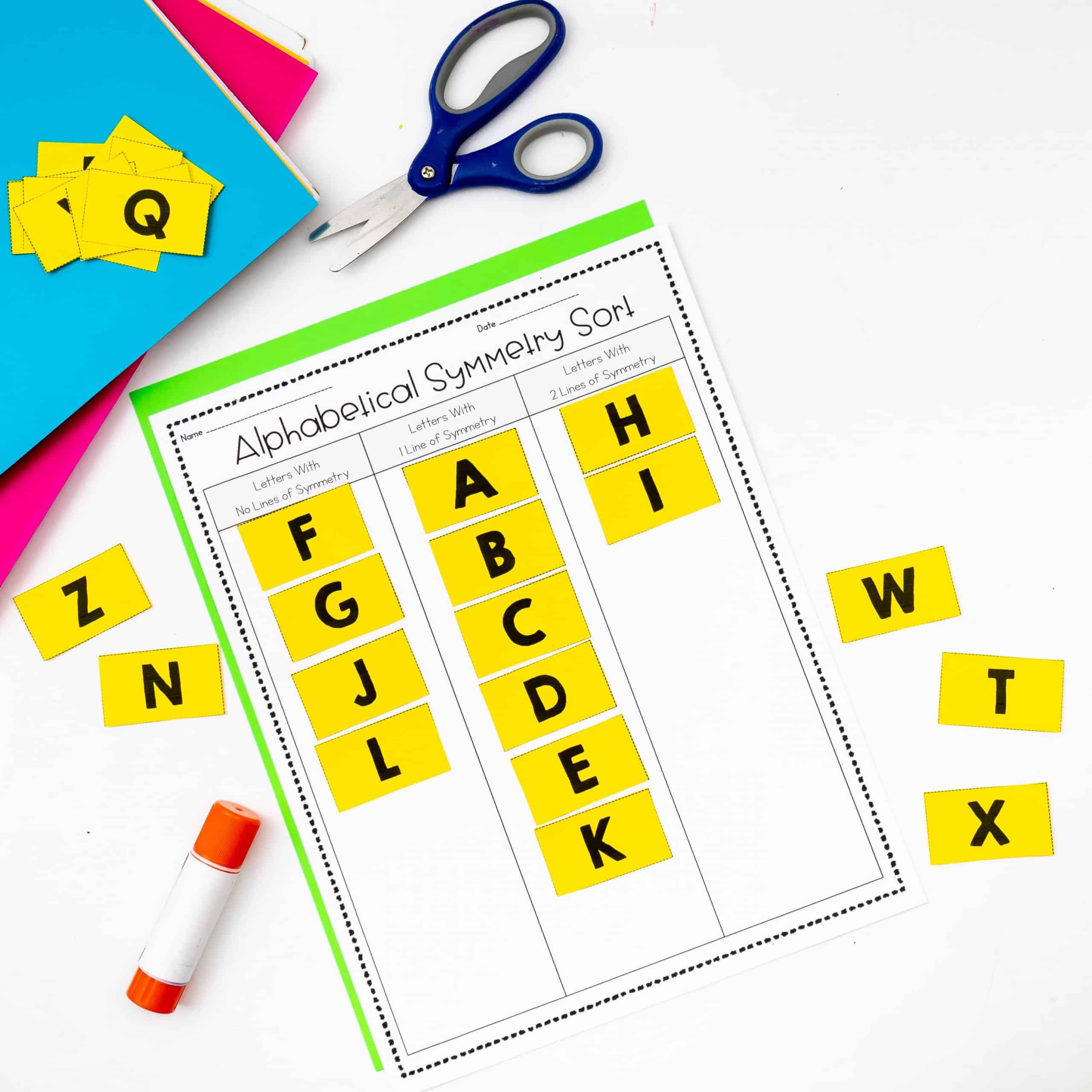
Angles Worksheets
After teaching symmetry, I introduce types of angles. Students are usually familiar with acute, obtuse, and right angles, so I don’t spend too much time on this. I have found that students have much more difficulty when the angles are within polygons, rather than an isolated angle. It’s beneficial to have students sort shapes by the types of angles found within the shape. You can see an example in the geometry worksheet below.
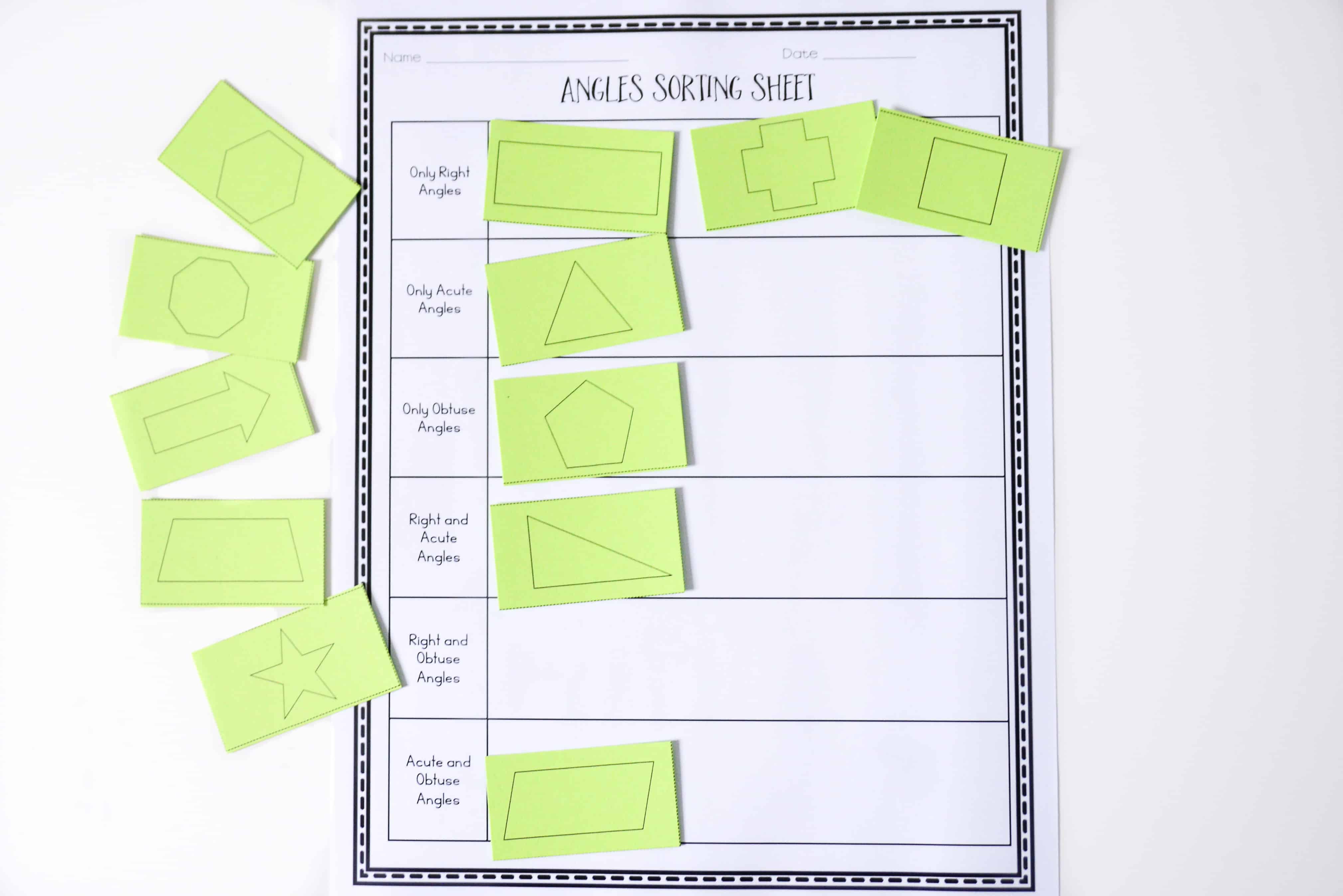
Types of Lines
When teaching types of lines, I focus on lines, line segments, rays, parallel, and perpendicular lines. Students love playing a game called I Spy a Line. In this game, students play with a partner and take turns looking for different types of lines (perpendicular and parallel). When students find a set of lines, they highlight the lines. Students should use one color for perpendicular lines and one color for parallel lines. Once students have highlighted a line, they cannot highlight that line again. Students should see how many of each type of line they can highlight.

It’s always fun finding ways to incorporate art and math, so we also do a little line art activity when learning about types of lines. These look great mounted on black construction paper and displayed in the hallway.
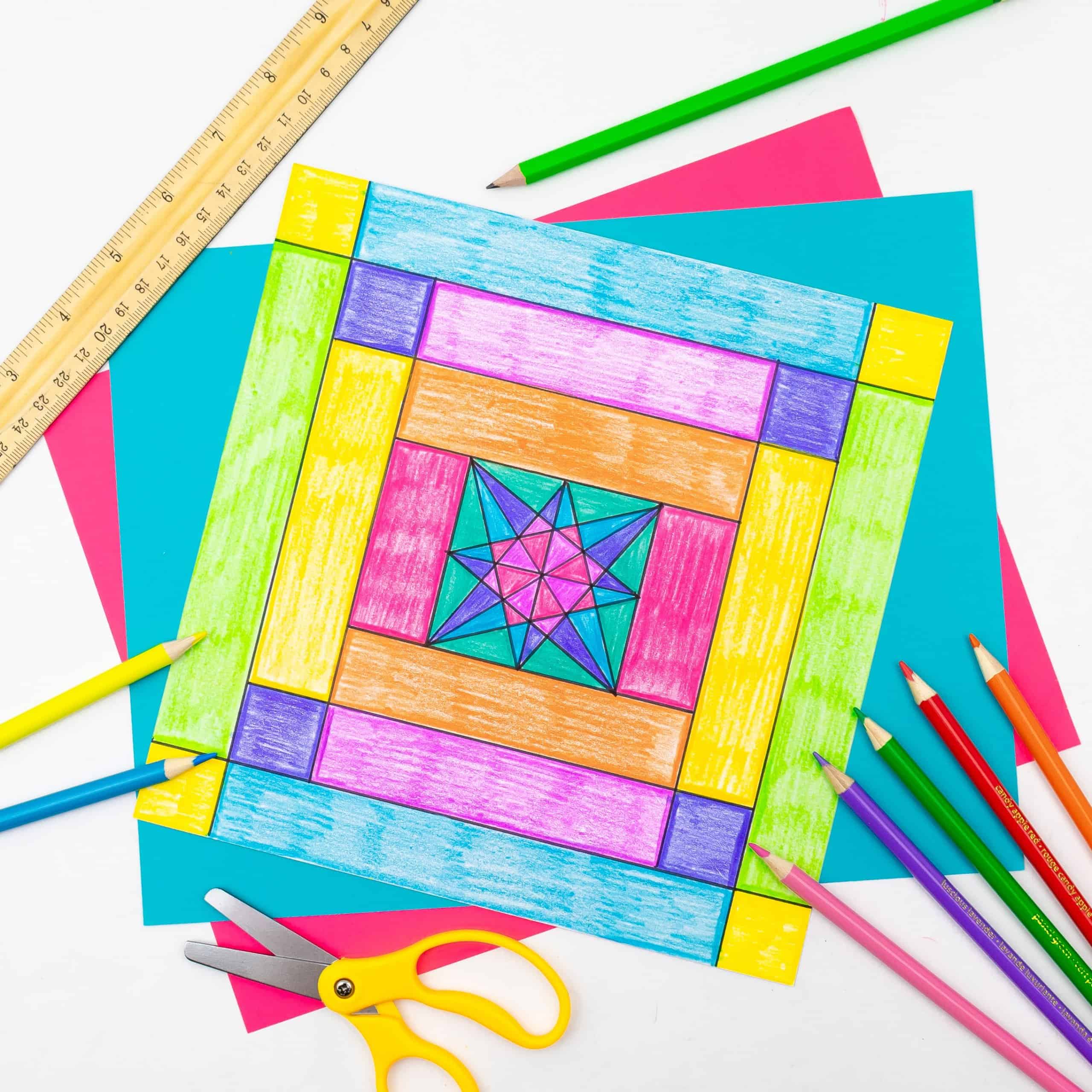
Geometry Worksheets-Types of Triangles
I then introduce types of triangles. At one point, my standards required me to teach equilateral, isosceles, and scalene triangles. I’m now expected to teach right, obtuse, and acute triangles. Either way, I follow the same approach. Geoboards are a great manipulative to introduce this concept. After hands-on exploration, I like using this Types of Triangles lesson that has students explain concepts about triangles. For example, “Is it possible to make a three sided polygon that is not a triangle?”

For additional triangle practice, these geometry worksheets are helpful. This triangle practice that allows students to practice identifying triangles and types of angles within triangles. It also gives students practice naming triangles.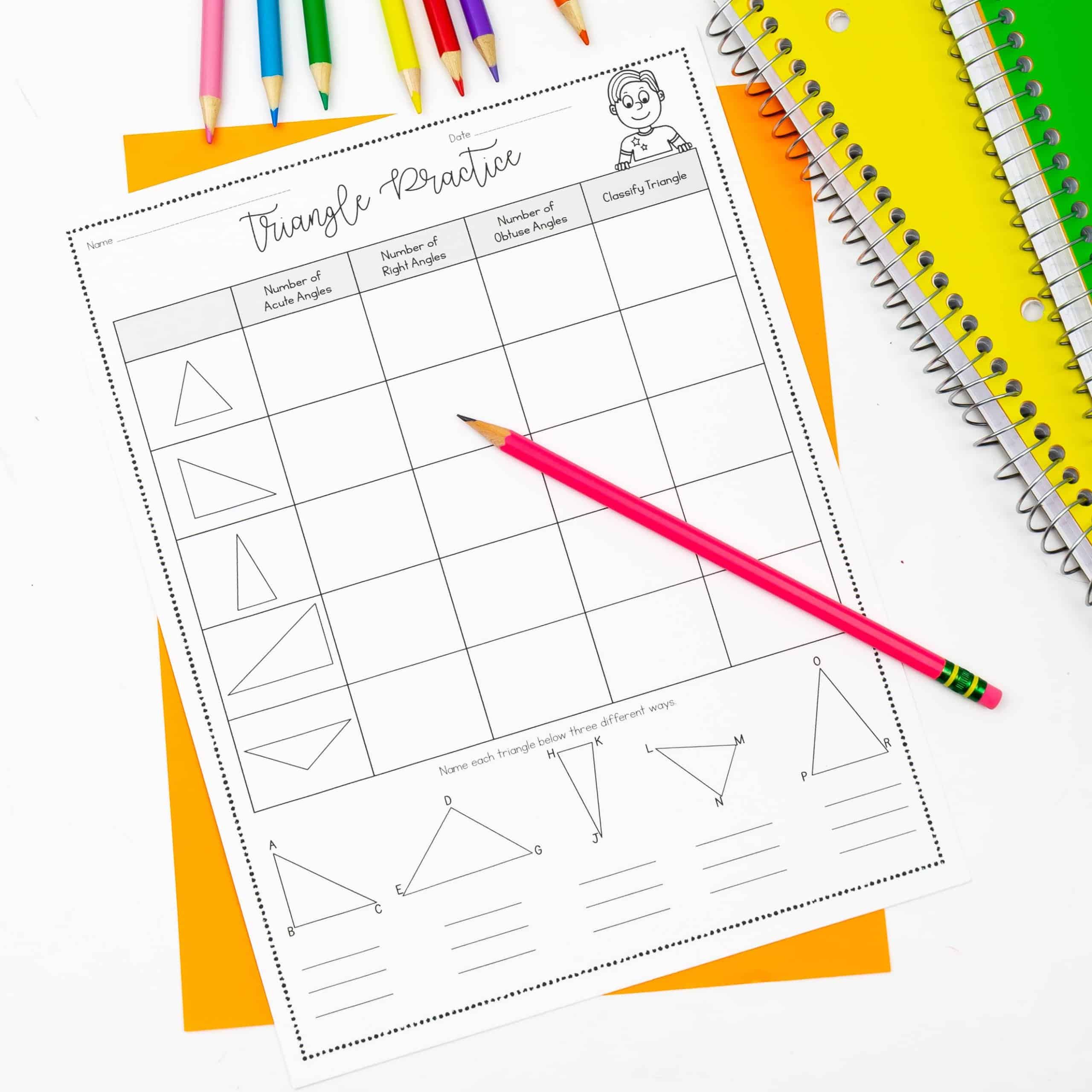 When teaching the properties of polygons, I love incorporating literature and math with Grandfather Tang’s Journey. After reading the book, have students experiment building different shapes with tangrams. Encourage students to embrace the struggle in this activity, because after teaching this lesson many years, I still can’t build all of the shapes. The purpose of the lesson is in the process and the exploration, not an end result.
When teaching the properties of polygons, I love incorporating literature and math with Grandfather Tang’s Journey. After reading the book, have students experiment building different shapes with tangrams. Encourage students to embrace the struggle in this activity, because after teaching this lesson many years, I still can’t build all of the shapes. The purpose of the lesson is in the process and the exploration, not an end result.
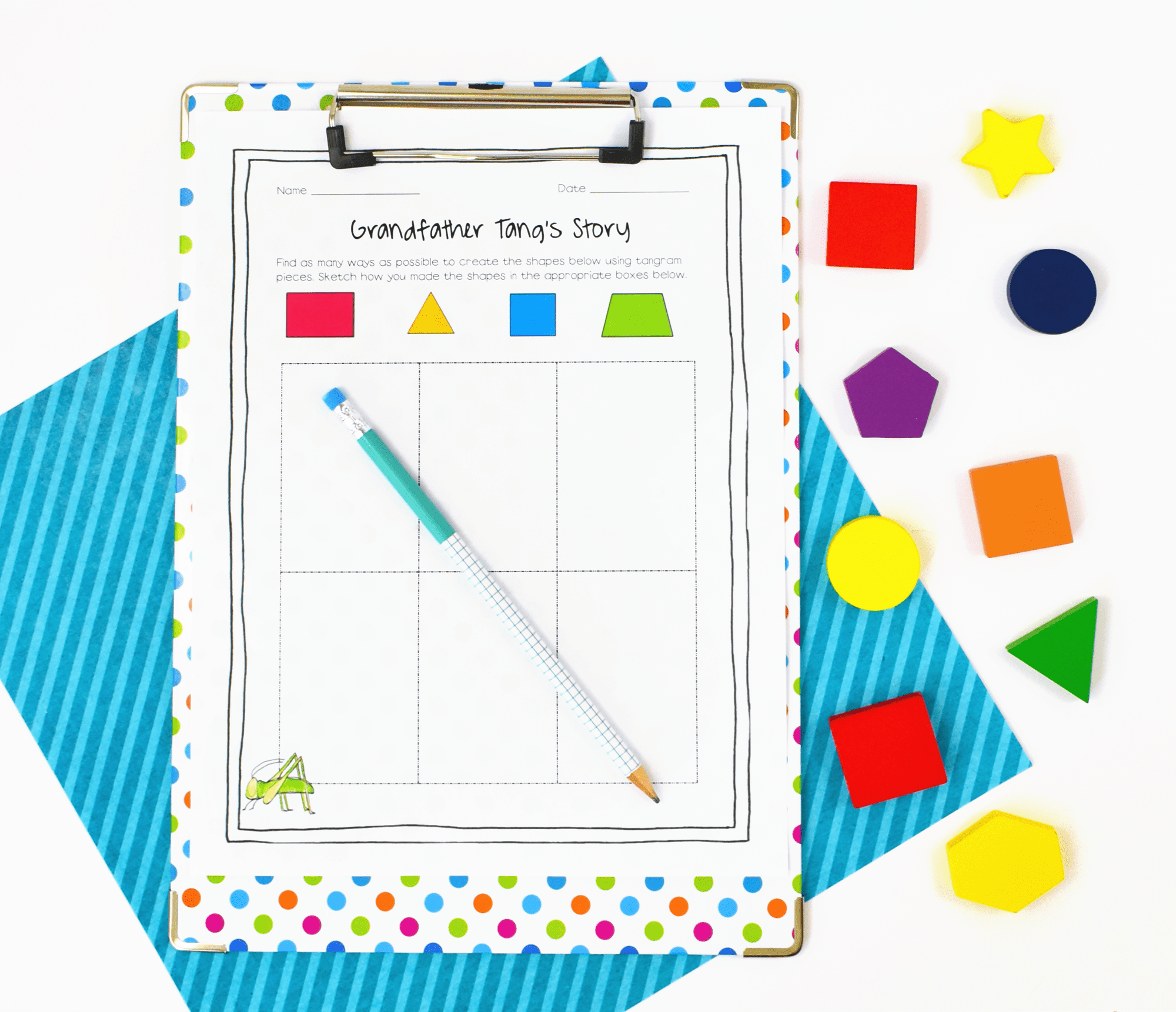
Polygons
When teaching about polygons, the emphasis is on the properties of quadrilaterals: parallelograms, squares, rectangles, rhombus, and trapezoids. This always requires quite a bit of practice.
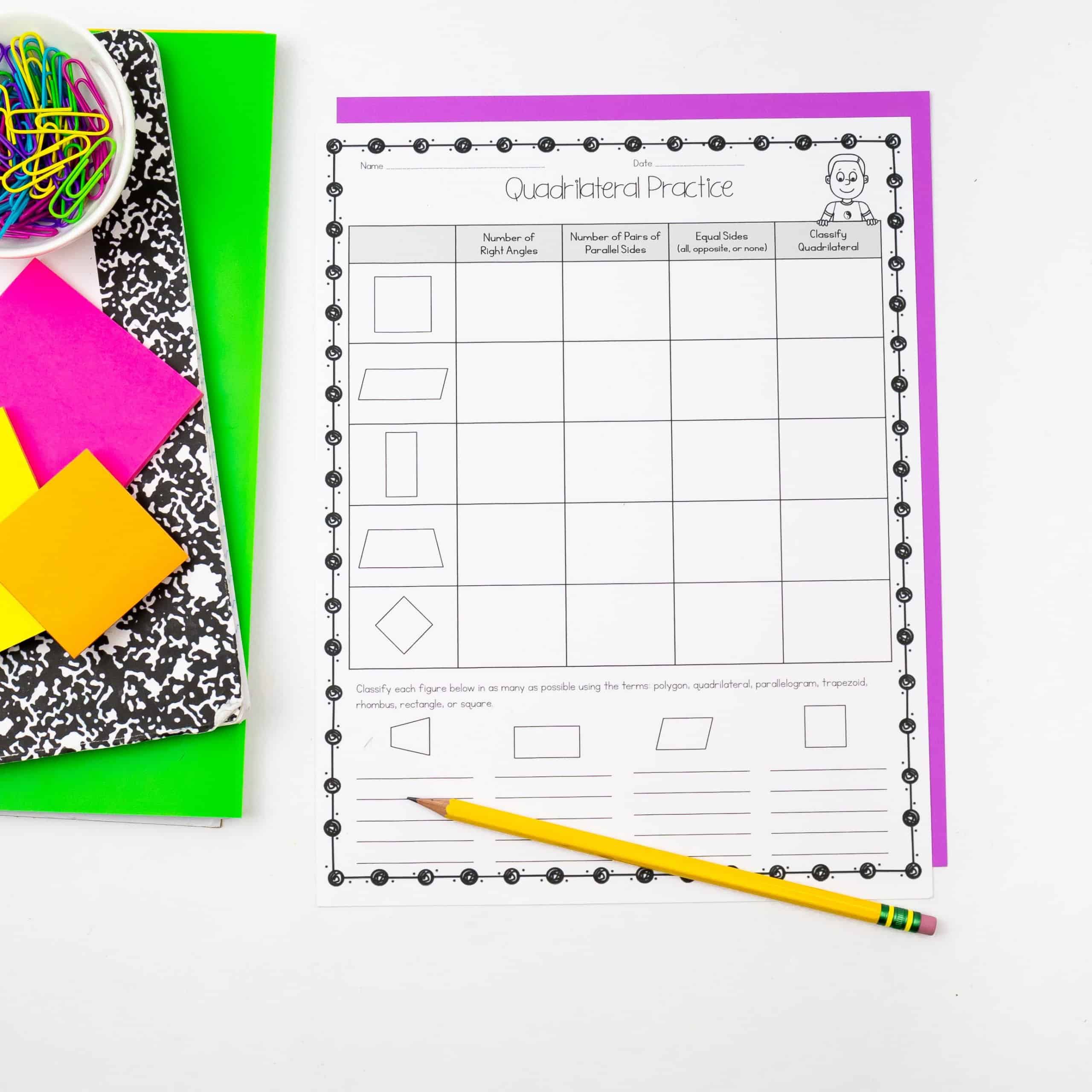
Sorts always always find their way into geometry worksheets. In this activity, students determine the criteria of each side of the Venn-Diagram. Then, they sort shapes based on the chosen criteria. This allows the task to be open ended where students may each have different answers.

You can also switch things up a bit. In this activity, the polygons have already been sorted and students label the criteria on the Venn-Diagrams. This is quite challenging for students!
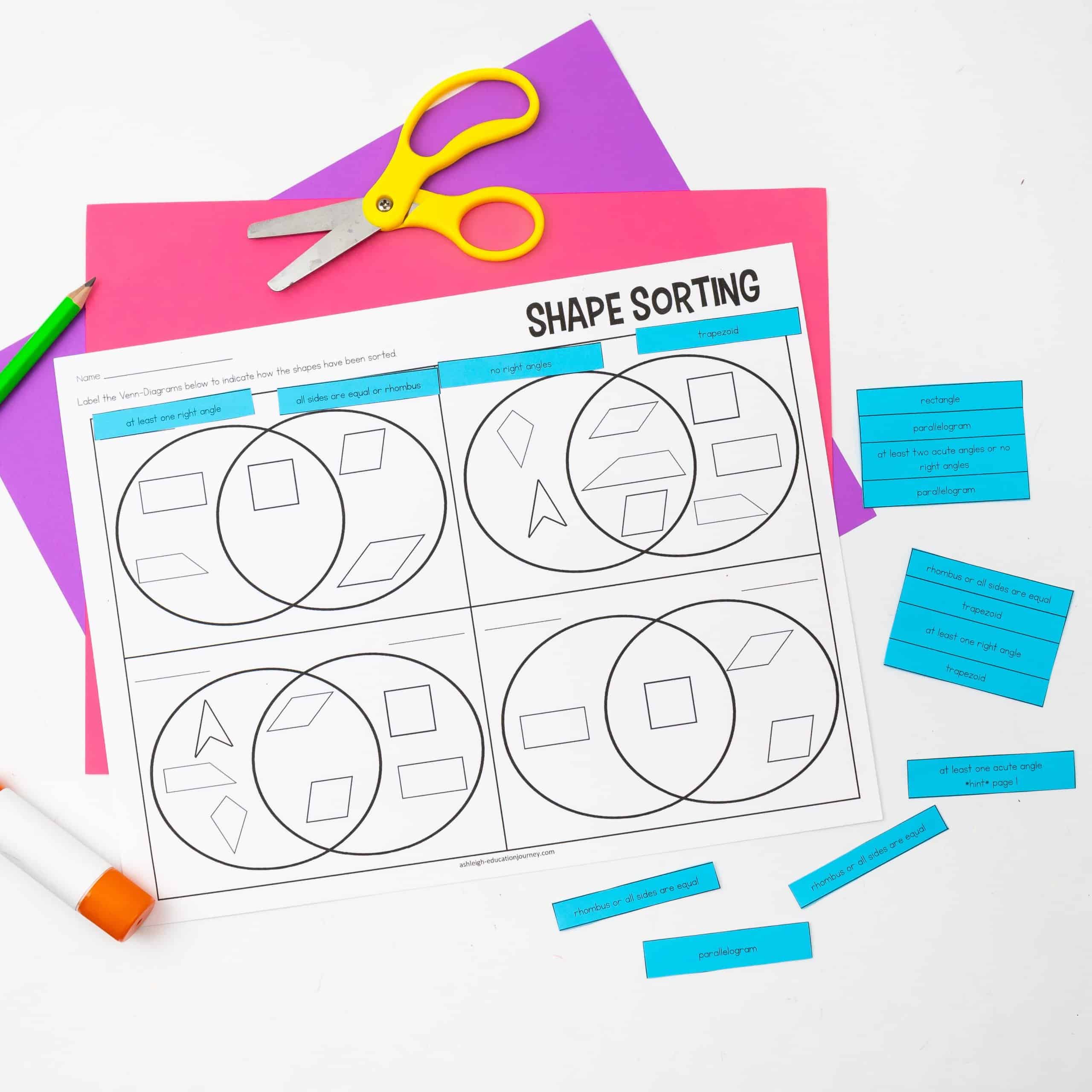
When students learn about irregular polygons, it helps students apply the rules of polygons in unique ways. They are no longer able to simply memorize what a typical rectangle looks like. Instead, students must apply what they know to design shapes that do not follow traditional norms.

Another great review is this agree or disagree activity, which you can download for free here. Students discuss and analyze each card and decide which column the statement belongs in.
For example, one card states “all rhombus are squares”. Students should conclude that the statement belongs in the disagree column. For every card that is in the disagree column, students should draw a counterexample to prove their disagreement.
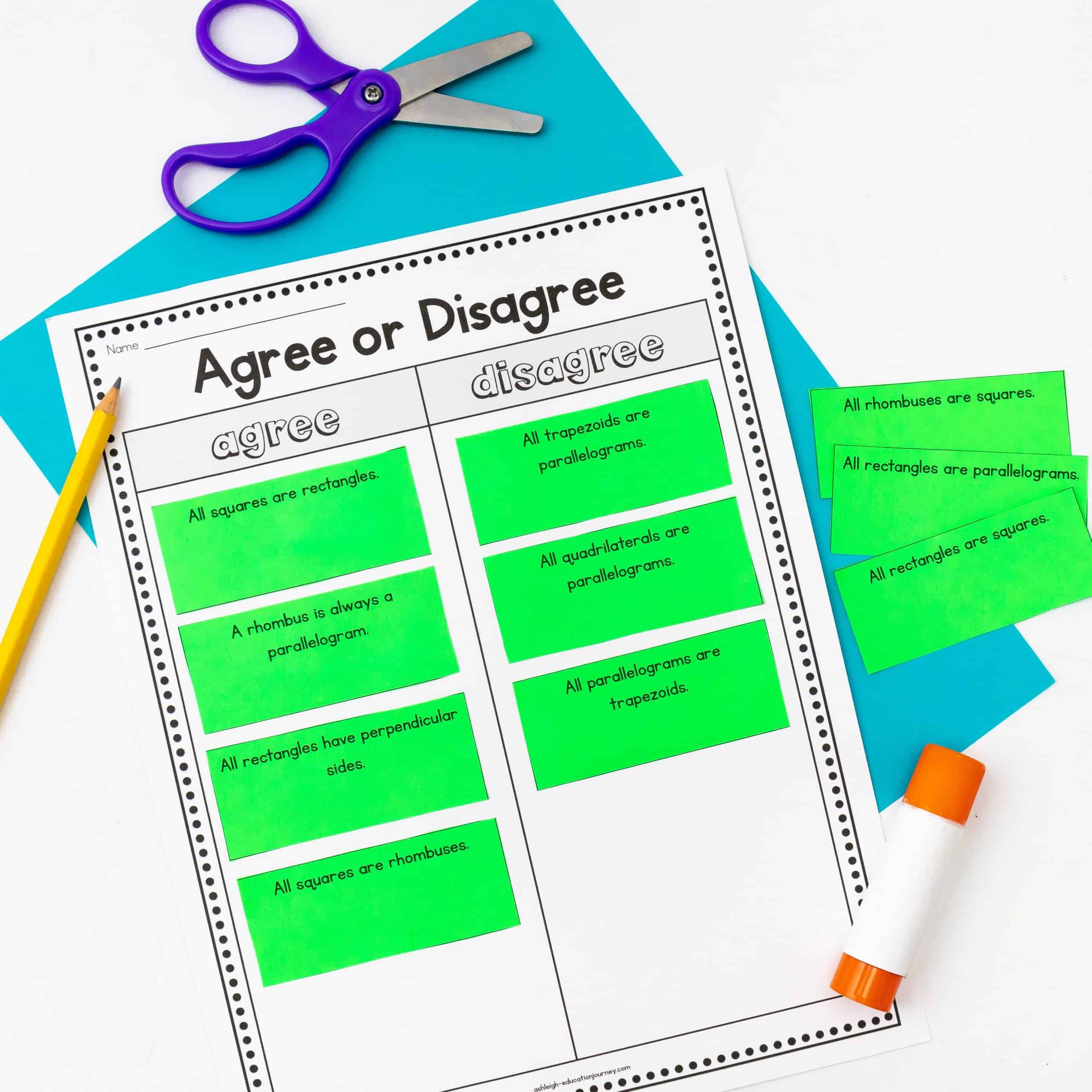
In the geometry unit, I’ve also included a few geometry games that can be added to math centers or students’ work time. For example, in Spin a Shape, students use the spinner to spin a shape. They cross out a shape that matches the shape the student landed on. Students take turns spinning until all of the shapes are crossed out.

As a culminating task, I’ve created a Geometry Park activity, which is my favorite activity in the geometry worksheets. In this activity, students use the Geometry Park Guide to design a community park. Students love having the opportunity to get creative, and the finished products look great!

You can find all of the geometry, worksheets, activities, games, and more in my 4th Grade Geometry Unit.
Related Posts
